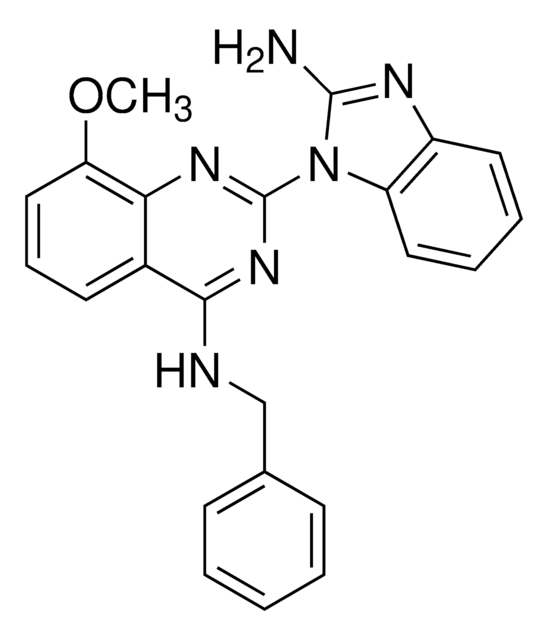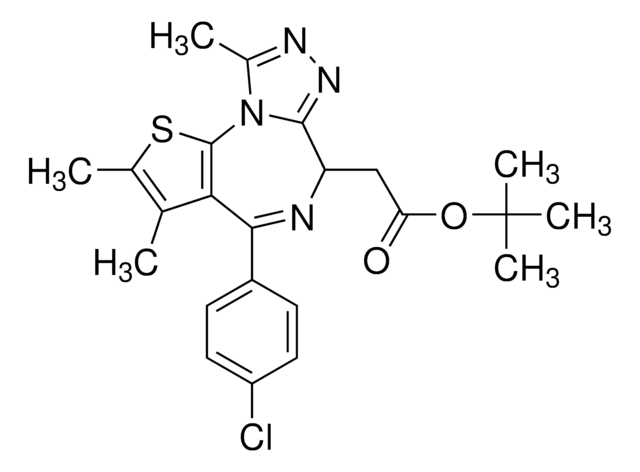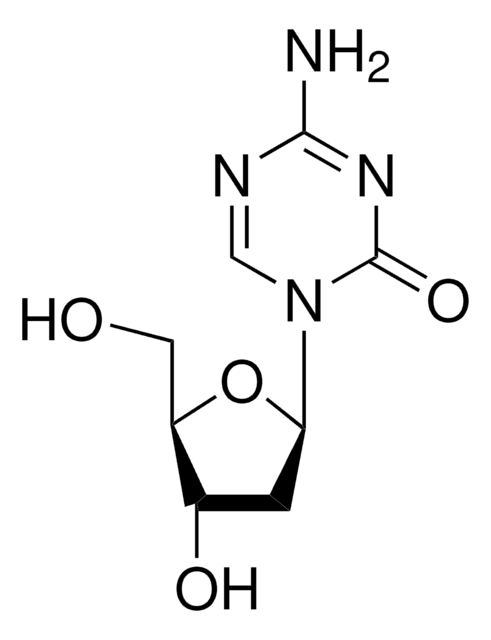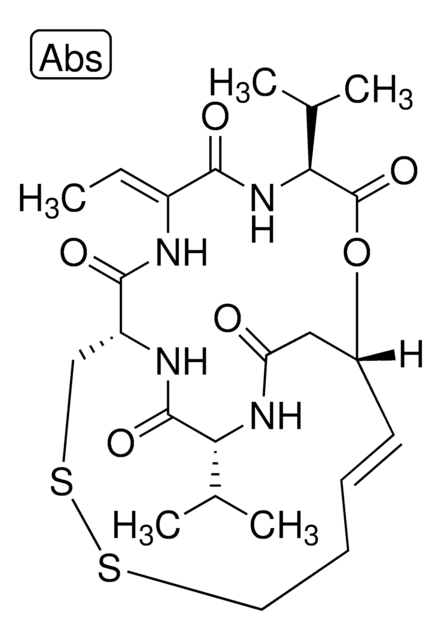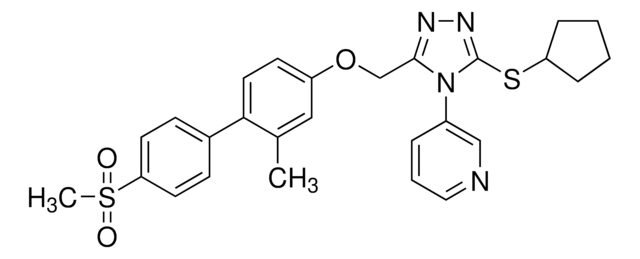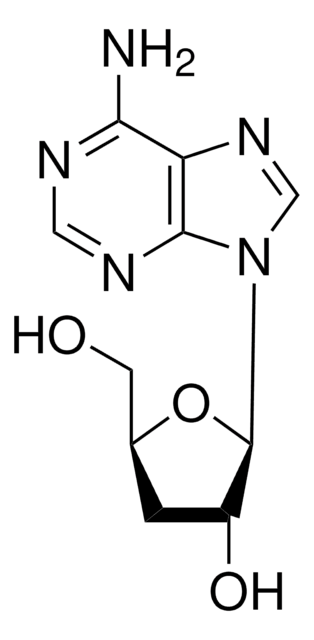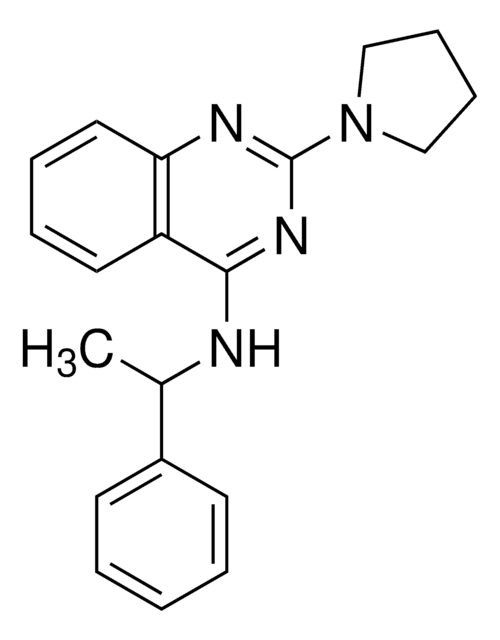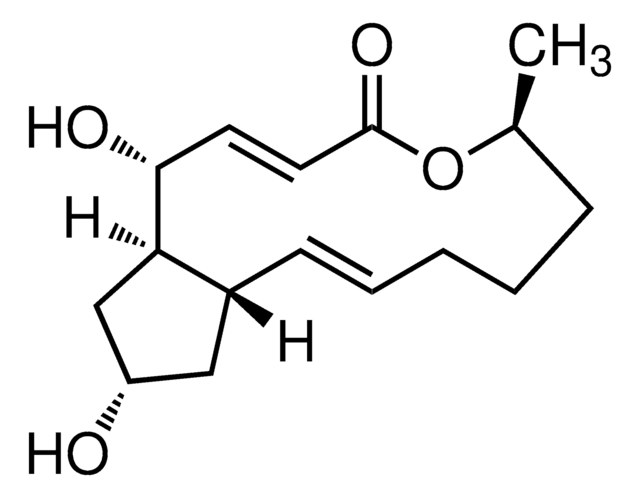SML0031
DBeQ
≥98% (HPLC)
Synonym(s):
JRF 12, N2,N4-dibenzylquinazoline-2,4-diamine
Sign Into View Organizational & Contract Pricing
All Photos(1)
About This Item
Empirical Formula (Hill Notation):
C22H20N4
CAS Number:
Molecular Weight:
340.42
MDL number:
UNSPSC Code:
12352200
PubChem Substance ID:
NACRES:
NA.77
Recommended Products
Quality Level
Assay
≥98% (HPLC)
form
powder
color
white to beige
solubility
DMSO: ≥20 mg/mL
storage temp.
room temp
SMILES string
C(Nc1nc(NCc2ccccc2)c3ccccc3n1)c4ccccc4
InChI
1S/C22H20N4/c1-3-9-17(10-4-1)15-23-21-19-13-7-8-14-20(19)25-22(26-21)24-16-18-11-5-2-6-12-18/h1-14H,15-16H2,(H2,23,24,25,26)
InChI key
QAIMUUJJAJBPCL-UHFFFAOYSA-N
Application
HeLa cells were treated with DBeQ and the effects on in vivo ubiquitination and protein dislocation were studied by live cell imaging.
Biochem/physiol Actions
DBeQ is a potent and specific inhibitor of ATPase p97, an integral component of the ubiquitin-fusion degradation (UFD) pathway. DBeQ inhibits the degradation of ubiquitinated proteins, the endoplasmic reticulum-associated degradation pathway, and autophagosome maturation. The compound also potently inhibits cellular proliferation and induces caspase 3/7 activity and apoptosis.
Storage Class Code
11 - Combustible Solids
WGK
WGK 3
Choose from one of the most recent versions:
Already Own This Product?
Find documentation for the products that you have recently purchased in the Document Library.
Customers Also Viewed
Holger W Auner et al.
PloS one, 8(9), e74415-e74415 (2013-09-27)
Inhibition of the proteasome is a widely used strategy for treating multiple myeloma that takes advantage of the heavy secretory load that multiple myeloma cells (MMCs) have to deal with. Resistance of MMCs to proteasome inhibition has been linked to
Yongwang Zhong et al.
The Journal of biological chemistry, 287(33), 28057-28066 (2012-06-23)
Misfolded proteins in the endoplasmic reticulum (ER) are dislocated to the cytosol to be degraded by the proteasomes. Various plant and bacterial toxins and certain viruses hijack this dislocation pathway to exert their toxicity or to infect cells. In this
Angela McHugh et al.
The Journal of investigative dermatology, 140(6), 1154-1165 (2019-11-11)
We performed a small interfering RNA screen to identify targets for cutaneous squamous cell carcinoma (cSCC) therapy in the ubiquitin/ubiquitin-like system. We provide evidence for selective anti-cSCC activity of knockdown of the E3 ubiquitin ligase MARCH4, the ATPase p97/VCP, the
Shana D Hardy et al.
Oncotarget, 8(61), 103302-103314 (2017-12-22)
Processing bodies (P-bodies) are ribonucleoprotein complexes involved in post-transcriptional mRNA metabolism that accumulate in cells exposed to various stress stimuli. The treatment of mammary epithelial cells with transforming growth factor-beta (TGF-β), triggers epithelial-mesenchymal transition (EMT), and induces the formation of
Ajit Tiwari et al.
Scientific reports, 6, 38681-38681 (2016-12-09)
Caveolin-1 (Cav1) drives the formation of flask-shaped membrane invaginations known as caveolae that participate in signaling, clathrin-independent endocytosis and mechanotransduction. Overexpression or mutations of Cav1 can lead to its mistrafficking, including its accumulation in a perinuclear compartment previously identified as
Articles
We presents an article on Autophagy in Cancer Promotes Therapeutic Resistance
Our team of scientists has experience in all areas of research including Life Science, Material Science, Chemical Synthesis, Chromatography, Analytical and many others.
Contact Technical Service